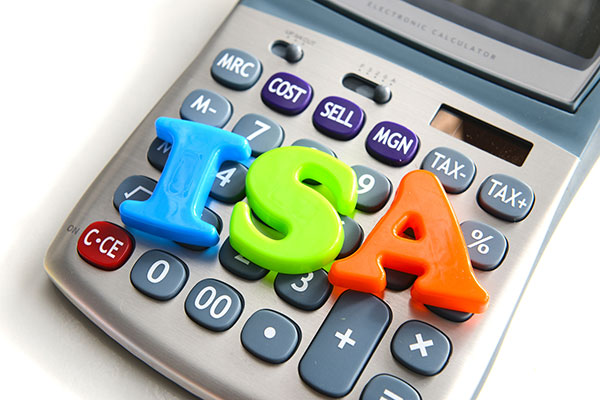ISAs: from savings tax break to the British ISA
As the ISA celebrates its 25th anniversary, Rachel Lacey recaps how the tax wrapper has changed over the years, provides an update on the new rules, and looks ahead to its future.
10th April 2024 10:51
by Rachel Lacey from interactive investor

6 April 2024 wasn’t just the first day of the new tax year, it was also the individual savings account’s (ISA) 25th birthday.
The tax-free savings wrapper was introduced by then Chancellor Gordon Brown in April 1999 as a way of incentivising us to save for our futures – with an initial allowance of £7,000 a year.
For savers and investors with money to spare, ISAs have been a tremendous success, and with an allowance that has now risen to £20,000 a year, has enabled them to shelter vast quantities from the taxman.
- Invest with ii: Open a Stocks & Shares ISA | Top ISA Funds | ISA Offers & Cashback
interactive investor alone revealed at the start of this year that it had 1,001 customers on the platform with ISAs worth more than £1 million.
Some very successful investors have become multi-ISA millionaires. A freedom of information request to HMRC by RBC Brewin Dolphin confirmed that the biggest ISA in the UK is now worth more than a staggering £11.6 million – belonging to an investor that used their full allowance every year, investing a total of £310,760.
ISAs past
ISAs were initially a bit baffling (putting it mildly) - with a choice of mini or maxi ISAs to choose from.
Savers could either open up to three mini ISAs from different providers (with money in cash, stocks and shares or life insurance) or one maxi ISA from one provider (which must offer stocks and shares, but not necessarily cash or life insurance).
There was a collective sigh of relief when they were replaced with the more straightforward cash and equity ISAs in 2008 (and everyone, thankfully, forgot about the life insurance element).
The allowance proved to be confusing too. Of that £7,000 allowance, only £3,000 could be in cash. And while the overall allowance did start to rise from 2008, it was only in 2014 – when it reached £15,000 a year – that the rules were changed to permit the same limit, irrespective of whether savers were using cash or stocks and shares ISAs.
ISAs present
Today you can invest up to £20,000 in an ISA – although this figure hasn’t changed since 2017.
There are also more ISAs to choose from. In addition to stocks and shares and cash ISAs, there’s the option of an Innovative Finance ISA – which enables you to hold investments in peer-to-peer loans tax free and Lifetime ISAs.
Meanwhile, 18 to 40-year-olds can open a Lifetime ISA – these accounts let you pay in up to £4,000 of your overall ISA allowance and get a £1,000 top-up from the government, in addition to tax protection. The catch is that the money can only be used to buy a first home or to fund later life.
Since 2011, when the Junior ISA was introduced, it’s also been possible to shelter savings and investments for children from tax. They have a lower allowance – currently £9,000 – and they cannot access their pot until they turn 18.
But, while the current selection of ISAs is arguably much more straightforward than the confusing array of mini and maxi ISAs that used to be on offer, they’re still not as simple as they could be.
- ISA insights: guides, investment ideas and tax tips
- Which ISA should I choose for my financial goals?
However, campaigners for ISA simplification have had some success and new changes were introduced earlier this week, which were announced in last year’s Autumn Statement.
Previously, it was only possible to open and pay into one type of ISA each tax year, but you can now open and pay into as many different ISAs as you like each year. This in itself won’t revolutionise ISA saving, but it should, at the very least, prevent people inadvertently falling foul of the taxman’s rules.
It is also now possible to make partial transfers between ISAs – even if they were opened in the same tax year. This stands to make more of a difference to savers and investors, enabling them to manage their finances more tax effectively. It will make it possible, for example, to transfer part of a cash ISA holding into a stocks and shares ISA, enabling you to get a better return on some of your money, but keep some tax-sheltered cash back on hand for emergencies.
Alternatively, those approaching retirement who, for example, want to de-risk their portfolio – or simply those who have a new need for short-term cash – will be able to transfer some money out of a stocks and shares ISA into a cash ISA.
There are also some tweaks to the Innovative Finance ISAs, notably a widening of the assets that are permitted. For the first time they will be able to hold long-term asset funds and property authorised investment funds, alongside peer-to-peer finance.
However, for anyone who was eyeing up the loophole that enabled 16- and 17-year-olds (or perhaps more realistically their parents or grandparents) to squirrel away £29,000 a year, your time has run out, with the minimum age for adult ISAs rising from 16 to 18 this year.

ISAs future
While the changes that are being introduced to ISAs this year will increase flexibility for savers and reduce the risk of them accidentally breaking rules, there are calls for both further simplification and linking increases to the ISA allowance with inflation.
Some have also called for money held in ISAs to be sheltered from inheritance tax (IHT).
In the next year or so there may also be a new ISA on the scene. In Jeremy Hunt’s latest Spring Budget, the chancellor launched a consultation into a new “British ISA”.
The patriotic ISA would give savers an additional tax-free saving allowance of £5,000 (on top of the current £20,000 ISA allowance) but the money can only be invested in UK-based investments.
The chancellor’s thinking is that the move would boost flagging investment in the UK.
- How to build a £1 million pension and ISA portfolio
- Budget 2024: new ‘British ISA’ with extra £5,000 allowance
But there is still no certainty as to when the British ISA will launch or, whether it will ever see the light of day.
The consultation period isn’t due to end until June – during which time financial services firms will respond with their thoughts and concerns – and after that the required legislation would need to go through a finance bill.
This means that the very earliest a British ISA could launch is April 2025 and there will be the hurdle of a general election between now and then (with no guarantees that the Conservatives will remain in power).
The industry response to the British ISA has been pretty subdued too, with commentators sceptical as to how effective it will be as a means of boosting investment in the UK.
For starters, the ISA will be of interest only to those investors who have maxed out their ordinary ISA allowance for the year but, at the moment, only around 15% of ISA investors use their full £20,000 allowance.
It also remains unclear how the rules could prevent investors simply shuffling their existing investments around – and putting £5,000 of UK-based investments into their British ISA without actually investing any more in the domestic economy.
But, whether the British ISA sees the light of day or not, one thing is clear. The ISA landscape doesn’t stand still for long and there will invariably be more change for investors to come.
These articles are provided for information purposes only. Occasionally, an opinion about whether to buy or sell a specific investment may be provided by third parties. The content is not intended to be a personal recommendation to buy or sell any financial instrument or product, or to adopt any investment strategy as it is not provided based on an assessment of your investing knowledge and experience, your financial situation or your investment objectives. The value of your investments, and the income derived from them, may go down as well as up. You may not get back all the money that you invest. The investments referred to in this article may not be suitable for all investors, and if in doubt, an investor should seek advice from a qualified investment adviser.
Full performance can be found on the company or index summary page on the interactive investor website. Simply click on the company's or index name highlighted in the article.
Please remember, investment value can go up or down and you could get back less than you invest. If you’re in any doubt about the suitability of a stocks & shares ISA, you should seek independent financial advice. The tax treatment of this product depends on your individual circumstances and may change in future. If you are uncertain about the tax treatment of the product you should contact HMRC or seek independent tax advice.